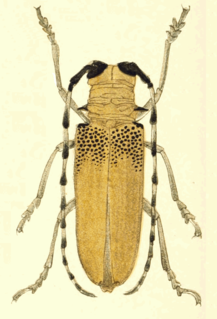
The tiger is the largest living cat species and a member of the genus Panthera. It is most recognisable for its dark vertical stripes on orange-brown fur with a lighter underside. It is an apex predator, primarily preying on ungulates such as deer and wild boar. It is territorial and generally a solitary but social predator, requiring large contiguous areas of habitat, which support its requirements for prey and rearing of its offspring. Tiger cubs stay with their mother for about two years, before they become independent and leave their mother's home range to establish their own.

The Tigris is the eastern of the two great rivers that define Mesopotamia, the other being the Euphrates. The river flows south from the mountains of the Armenian Highlands through the Syrian and Arabian Deserts, and empties into the Persian Gulf.

The Tigris–Euphrates river system is a large river system in Western Asia which discharges into the Persian Gulf. Its principal rivers are the Tigris and Euphrates along with smaller tributaries.
River Tigris or Tigris was a constellation, introduced in 1612 by Petrus Plancius. One end was near the shoulder of Ophiuchus and the other was near Pegasus, and in between it passed through the area now occupied by Vulpecula, flowing between Cygnus and Aquila. It did not appear on Hevelius' atlas of 1687 or Johann Bode's Uranographia atlas of 1801 and was quickly forgotten.

The Mesopotamian Marshes, also known as the Iraqi Marshes, are a wetland area located in Southern Iraq and Southwestern Iran. Historically the marshlands, mainly composed of the separate but adjacent Central, Hawizeh and Hammar Marshes, used to be the largest wetland ecosystem of Western Eurasia. It is a rare aquatic landscape in the desert, providing habitat for the Marsh Arabs and important populations of wildlife. Draining of portions of the marshes began in the 1950s and continued through the 1970s to reclaim land for agriculture and oil exploration. However, in the late 1980s and 1990s, during the presidency of Saddam Hussein, this work was expanded and accelerated to evict Shia Muslims from the marshes. Before 2003, the marshes were drained to 10% of their original size. After the fall of Hussein's regime in 2003, the marshes have partially recovered but drought along with upstream dam construction and operation in Turkey, Syria and Iran have hindered the process. Since 2016 the Mesopotamian marshes have been listed as an UNESCO Heritage Site.

Batocerini is a tribe of longhorn beetles of the subfamily Lamiinae.

Apriona is a genus of longhorn beetles in the subfamily Lamiinae.

Apriona germari is a species of beetle in the subfamily Lamiinae, found in India, through Southeast Asia, to southern China. It is mostly yellow in colour.

Apriona aphetor is a species of beetle in the family Cerambycidae. It was described by Newman in 1842. It is known from Sumatra and the Philippines.

Apriona brunneomarginata is a species of beetle in the family Cerambycidae. It was described by Breuning in 1948. It is known from Borneo.

Apriona cinerea is a species of beetle in the family Cerambycidae. It was described by Chevrolat in 1852. It is known from India and Pakistan. It contains the varietas Apriona cinerea var. newcombei.

Apriona cylindrica is a species of beetle in the family Cerambycidae. It was described by Thomson in 1857. It is known from Java.
Apriona irma is a species of beetle in the family Cerambycidae. It was described by Kriesche in 1919.

Apriona marcusiana is a species of beetle in the family Cerambycidae. It was described by Kriesche in 1919. It is known from Malaysia, Borneo and Sumatra.
Apriona minettii is a species of beetle in the family Cerambycidae. It was described by Eric Jiroux in 2011.
Apriona rixator is a species of beetle in the family Cerambycidae. It is known from Malaysia, Borneo, and the Philippines.

Apriona rugicollis is a species of beetle in the family Cerambycidae. It was described by Chevrolat in 1852. It is known from China, Cambodia, Japan, Taiwan, North Korea, South Korea, and Vietnam.

Apriona swainsoni is a species of beetle in the family Cerambycidae. It was described by Hope in 1840. It is known from Myanmar, China, Laos, North Korea, South Korea, Vietnam, and Thailand. It feeds off of Caesalpinia decapetala.
Apriona teocchii is a species of beetle in the family Cerambycidae. It was described by Jiroux in 2011.
Apriona unidentata is a species of beetle in the family Cerambycidae. It was described by Pic in 1936. It is known from Vietnam.












